High Density Fuels, Boron-Gel Fuels
and
Diboride Thermal Protection Systems
by Mike Lorrey, President
Lorrey Aerospace
3/12/2006
| After researching NASA's scramjet program in the X-43A, and how they have
ditched what were planned hydrocarbon fuelled versions, as well as looking into
NASA's GTX program to develop and test Rocket Based Combined Cycle (RBCC)
engines, which use ejector assisted rockets for take-off, switching first to
ramjet then scramjet airbreathing modes, up to mach 10-12, where the engine
transitions to full rocket mode, it became clear that, prior to the current
"Back to Apollo" fad at NASA, technologies were being developed that would have
resulted in truly reliable and reusable single stage to orbit aerospace planes.
The reason for this multi-mode propulsion is pretty simple.
The best Isp of any commonly used non-toxic chemical fuel is liquid hydrogen, when burned with liquid oxygen(LOX) it exhibits a rating of 350 seconds at sea level, to 450 seconds in vacuum. Kerosene (RP-1) with LOX gets between 275-325 seconds. With LH2, a rocket carrying all its own propellant must have a mass fraction of .87 or better. With Kerosene, it must be .93 or better. This means for a 100,000 lb, fully fuelled launcher, only 13,000 can be structure, engines, avionics, and payload, with LH2, or 7,000 lb with kerosene. The rest must all be fuel and oxidizer. A simple analysis would make you think that hydrogen was the fuel to go with, but you would be wrong, primarily because hydrogen has such a low density, only 0.07 g/cc, versus kerosenes 0.82 g/cc, that the LH2 tank would be five times larger than the necessary kerosene tank. While LH2's BTU/kg energy density is the highest, more than twice that of kerosene, its volumetric energy density (BTU/liter) is less than one fifth that of kerosene. As a result, if you built two launch vehicles, one runs on LH2, one runs on RP-1, launching the same payload, your LH2 tank would be five times larger and more than 5 times heavier (due to cryogenics and pressurization issues, which means more fuel to boost the heavier vehicle). This means a much heavier fuel tank, and thus a much heavier launch vehicle, that is more difficult to reach the needed mass fraction. NASA uses hydrogen wherever they can for a few reasons: one is that their budget is determined by political committees of senators and congressmen, whose election is often dependent upon the environmentalist vote, which tends to support a shift to a hydrogen economy; another reason is that a vehicle that is more difficult to reach orbit means it is more expensive, with more money to go to more contractors, which can be located in more congressional districts, which also serves the political ends of congressmen seeking pork for their constituencies. Additionally, NASA's mandate is about developing advanced technologies, which is used to spin off into the private sector to maintain US technological and economic supremacy. This also serves the political ends of congressmen; lastly, I believe that NASA engineers just haven't deeply analysed the issue, and are willing to go with the politically expedient choice. My conclusion, though, is that hydrogen is a terrible fuel, one wants to maximize both the Isp of a fuel, AND its density, so as to minimize the size and mass of one's launch vehicle. Launch vehicle costs are largely determined by size, since size reflects the number of parts, greater structural strain, complexity, and increased odds of parts failure, so a business oriented launcher should seek to minimize launch vehicle size as much as possible, not just to acheive a better mass fraction. Denser fuels also make it easy to acheive mass fractions because of their density, they tend to hold much more fuel mass, so it is possible to make orbit with a much smaller launch vehicle.
Most conventional solid fuels have rather poor Isp compared to liquid fuels. The best seem to be those used by Thiokol, however the recent advancement of hybrid rockets are a slight improvement in Isp over conventional solids, while retaining much of the high density. Others have been used. The density advantages of solid fuels, however, do not make up for the poor Isp. As an example, an SRB used on the space shuttle system, if launched alone with no payload, could only reach mach 18 as a maximum velocity at burnout. BoronBoron fuels have been researched since the 1950's, and have been used in some military missiles and ramjet propelled missiles since then. There is, however, a dearth of information about this fuel online. One of the few good sources is the web page of the Onera program in France, which is developing hypersonic ramjet propelled missiles.
Particularly this chart, depicting the Isp of various fuels using boron, including slurries of kerosene and boron, burned in ramjets, clearly shows the Isp advantages of boron, even over a high performance liquid fuel like kerosene. In this chart, we see the volumetric specific impulse (vs the Gravimetric Isp that people are used to seeing). I have found other references in various USAF Air War College papers on proposed or classified real Trans-Atmospheric Vehicles (TAVs) about using boron or borane additives to jet or cryogenic fuels that state that "This program, currently titled the “High-Energy Density Materials Program” (HEDM), is a concept to increase the energy content in conventional chemical bonds of non-nuclear fuels. For example, a 5 percent boron additive to solid hydrogen is projected to produce a 107-second Isp improvement in efficiency, and other additives such as titanium and boron/titanium composites show promising results."1 This appears to be true, as the Onera chart, shown above, show that a 55% boron / 45% kerosene slurry exhibits an Isp increase of 50-100% over kerosene in a ramjet, varying based on specific thrust. As you can see, the boron provides both Isp boost and densification of the fuel (which goes to help improve fuel fractions). This would boost the volumetric Isp of kerosene to 490 seconds up to as much as 650 seconds. NASA HEDM Program papers2 state that the gravimetric improvment in Isp between 31-35 seconds for boron/kerosene slurries, so it appears the primary benefit is that boron densifies the fuel while providing modest improvement in gravimetric Isp. Particularly, the most recent Aviation Week & Space Technology issue features a cover story on the USAF "Blackstar" TAV program of the late 80's and 90's, which featured a XB-70-like mothership which air launched a smaller orbital vehicle. The use of boron-gelled fuels is associated with this vehicle, which operated primarily out of Groom Lake/Tonopah Test Facility in Nevada. The exhaust products of boron combustion are primarily boron oxides which combine with water and sodium in sea water to form borax, which is the naturally occuring compound of boron. Converting existing rocket engines to burn boron slurries presents problems. Firstly, some have stated that the gelled slurries are hard to pump, however NASA's HEDM program says that the gel exists only in a rest state, that when induced to flow, the fuel exhibits a viscosity change to resemble that of water. Another potential problem is of coking as well as wear of boron particles (boron is second to diamond in terms of hardness) upon turbopumps and valve seals. This problem is apparently solved by recent patents in use of nanoparticle boron rather than micron sized particles. Thirdly, experiments in the 50's with diborane and pentaborane fuels exhibited liquid boron trioxide (B2O3) compound deposits on the walls of rocket exhaust nozzles, which may degrade nozzle performance, however use of ablating nozzles may allow ablation erosion to counteract the deposition issue. One problem with this early experiment is that the experiment was corrupted by the use of a percholorate igniter, which was later found to be unnecessary. Furthermore, the deposits seem to be boron compounds that have extremely high resistance to heat, such as boron carbonates and nitrates, and thus may act as a TPS for the rocket nozzle, so smart rocket design would take them into account. It is not clear that boron-kerosene slurries would exhibit similar deposition issues, however experiments by Rocketdyne on boron-gel ramjets in the late 1980's indicates that all deposition issues are solved by a minor percentage of fluorine in the oxidizer stream. The Reentry Problem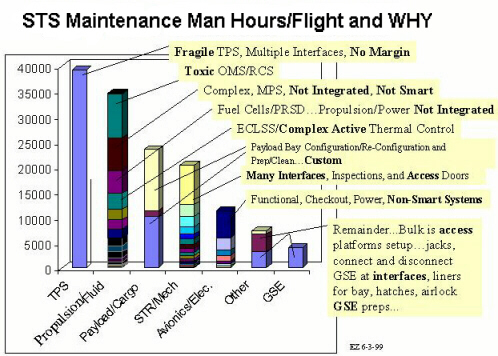 The other big problem is returning this vehicle to Earth.
Getting to orbit is one thing, but if this is to be a manned vehicle, it needs
to come home, not be a throwaway. The problem is that most airframes are made
mostly of aluminum which can withstand, at most, temperatures of 350 degrees C.
Space shuttle reentries have shown us that the system used
by the STS experiences reentry temps in excess of 1600 degrees at some points on
the airframe of the space shuttle orbiter. The other big problem is returning this vehicle to Earth.
Getting to orbit is one thing, but if this is to be a manned vehicle, it needs
to come home, not be a throwaway. The problem is that most airframes are made
mostly of aluminum which can withstand, at most, temperatures of 350 degrees C.
Space shuttle reentries have shown us that the system used
by the STS experiences reentry temps in excess of 1600 degrees at some points on
the airframe of the space shuttle orbiter.
The orbiter also has an aluminum airframe, so it is not impossible to use such, apparently, and have a reusable space plane, although this is commented on as a budget compromise, building a hot structure in the 1970's would have been prohibitively expensive, particularly given the payload demands put on the shuttle program by the military. One problem with the orbiters Thermal Protection System (TPS) is its high maintenance costs, requiring tens of thousands of man-hours of work to repair and replace thousands of silica tiles after every mission. Another is its fragility, as was seen in the recent Columbia disaster, where a mere piece of foam from the external tank fell off and hit the reinforced carbon-carbon composite leading edge, punching a hole in the leading edge which resulted in burn through and complete loss of vehicle and crew. Another problem is its dead weight: the Orbiter TPS was not designed as part of the airframe structure, so the airframe must support both the weight of itself and the TPS. Clearly both a more rugged TPS is needed, which is part of the airframe, as well as a less treacherous reentry profile that is less needful of extreme temperature tolerant materials. I believe we've accomplished both of these.
In my research, I found the FIRST re-entry glider, a space station escape pod for one man, which, after de-orbit burn, deploys an inflated-spar Rogallo Wing (essentially a hang glider) made of metal wire fabric impregnated with silicone rubber (thickness of only 1.5 mm!). This seemingly gossamer vehicle, which has been tested, unmanned, has such a low wing loading (~2.5 lb/ft^2) that it is capable of reentry into Earths atmosphere at a very shallow glide of -1 degrees, flying at a 70 degree angle of attack, with minimal heating and a g loading of 2.0. While I am not sure, I believe the silicone being used is MA-25, a spray on hand applicable TPS developed by Lockheed and used on the Space Shuttle, that exhibits thermal tolerance up to 1200 degrees F.
Examination of the re-entry profile of the Space Shuttle Orbiter makes this obvious: It is clear that the orbiter doesn't start to lose significant amounts of velocity until it is below 250,000 ft where the atmosphere starts to thicken up, and because of its high wing loading, cannot generate the force to skip off the atmosphere. Instead, the Orbiter maintains a 40 degree angle of attack from orbit until 200,000 feet, losing little speed, diving deeply into the atmosphere at high hypersonic speeds, and only bleeds off velocity once achieving a very high dynamic pressure upon exposed vehicle surfaces. This is illustrated by a chart of the G-load on Shuttle Orbiter crew during the reentry profile, seen belo. G-loads do not exceed 1 G until 600 seconds into the reentry profile, which as we can see by the previous figure is at or below 240,000 ft altitude, the start point of the true deceleration in the thicker atmosphere. Conversely, the light-loaded X-106 (estimated curve superimposed on chart)
would see significant deceleration earlier and at higher altitude, peaking at
higher Gs and then releasing as the vehicle skips off the upper atmosphere,
providing time for the TPS to radiate excess heat before diving in again. In the
reentry trajectory, the X-106 would follow an altitude path that would not
exhibit the steep altitude dip in the first 400 seconds of reentry. By the time
the 106 hit 200,000 feet, it would travelling under mach 5, where the shuttle
would still be going over mach 8.
Our reference vehicle design comes out with a reentry wing loading of 14.75 lb/ft^2, less than a Cessna 172. At a 60-70 degree AOA, the X-106 should lose significant speed as soon as it drops below the 350k-400k ft altitude boundary of the atmosphere. Its velocity curve should not exhibit the sort of steep "S" curve profile of the STS Orbiter, but rather a much more graduated and constant deceleration, with some skips to give the TPS some cooling breaks. This expectation seems to be confirmed by a 1960's design for a 6-man rescue/reentry version of FIRST which was designed to a wing loading of approximately 11.6 lb/ft^2, triple that of FIRST, and slightly less than that of our reference vehicle. Both vehicles appear to have been designed to reenter with a 70 degree AOA in order to maximize windward cross sectional area, which is necessary for maximum decelleration in the thinnest atmosphere. Given this independent confirmation of our thought processes by an Aerojet research project, we accept our conclusions as a given. Our task was then to find a vehicle capable of handling the needed conversions, with an airframe structure capable of high speed maneuvering and high G loadings (to handle the heavy fuel load), and of being converted to a semi-hot structure for a shallow low-wing-loading reentry profile. The F-106 again came to the top of the list. Once the J75 engine, heavy 50's era electronics (over 2900 lbs!), and useless weapons system are all removed, among other things, the reentry wing loading has become so low that the X-106 will behave as a glider at hypersonic speeds in the upper atmosphere. It may take more than a single orbit to complete a reentry.
A doubling of maintenance man hours not only increases operations costs per flight, it halves sortie rates, thus cutting revenue opportunities by half. As a result, a doubling of maintenance man hours per flight cuts revinue:cost ratios by 3/4. This explains why the Shuttle's original planned sortie rate of 40 flights per year has never been reached, and instead averaged 8 flights per year prior to the Columbia disaster, while Shuttle payload costs per pound have quadrupled from $5,000/lb to $20,000/lb. Thus, it is imperative that TPS be as maintenance free as possible, as should all other systems of the vehicle. As the primary bad actor of the Shuttle TPS is the silica tiles, we will automatically avoid this technology like the plague.
As the legacy airframe of the X-106 is primarily aircraft aluminum alloys, protecting the low temperature aluminum from temperatures of the RCC will require use of honeycomb structures, thermal blanket materials, and highly insulative and temperature resistant aerogel materials underneath the RCC and between it and the aluminum airframe. Aluminum sheet metals will, where possible, be replaced with titanium, titanium aluminide metal matrix, and beryllium-aluminum alloy in sheet. Body panel edges shall overlap in 'sawtooth' patterns to present all seams diagonally to the airstream at whatever point on the exterior surface, and to prevent ingress of reentry plasmas into the interior of the vehicle. Honeycombs will consist of inconel and titanium, while the comb cells shall be filled with aerogels, as will the hollow leading edges and nose cone structures. While inconel is a dense alloy, its sparse use as thin sheet in honeycomb ribs will be of immense importance in standing the RCC off from the inner airframe surfaces. Its high density (8.7 g/cc) should be counterbalanced by the extreme low density (0.0019 g/cc) of silica aerogel, which is equally temperature resistant, with a melting point over 1200 C (2100+ F). Aerogels extremely low thermal conductivity (approx. 0.017 W/(m·K)) is better than that of empty air, and thus makes an ideal filler for honeycomb structures. Fasteners will be inconel featuring ceramic washers so that bolts can directly connect the sandwich body panels to the airframe without conducting exterior reentry heat directly to it through the inconel bolts.
This is unfortunate, but is in line with the scuttling and disappearance over the past 2-4 years of every technology project from NASA that would contribute to an effective design for a successful 2nd Generation SSTO RLV. This may not be an accident. Some of these projects have resurfaced at DARPA or other military labs, while others seem to have gone deep black. It is suspected by a number of commentators to be a sign that these technologies are being used in a replacement for Blackstar, which Aviation Week believes has recently been mothballed. While the public space program is going "back to the future" in its ATK Thiokol corporate welfare program known as ESAS (which also guarantees zero loss of government and contractor union jobs at the Cape, arguably the biggest problem with affordable launch costs), it appears that a 'real' space program may still be going on in the deep black world while the rest of us are being shafted again with government fireworks shows. Given the liberalization of private launch regulations recently, it would behoove those of us in the private launch movement to seek to incorporate these, and other, developed and proven advanced launcher technologies into our own launcher design. We at Lorrey Aerospace are doing this with our X-106 concept, and we encourage others in the movement to investigate them as well.
References: |
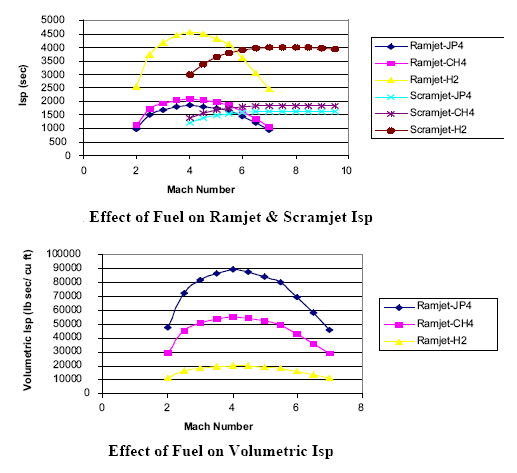

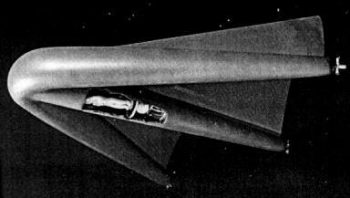

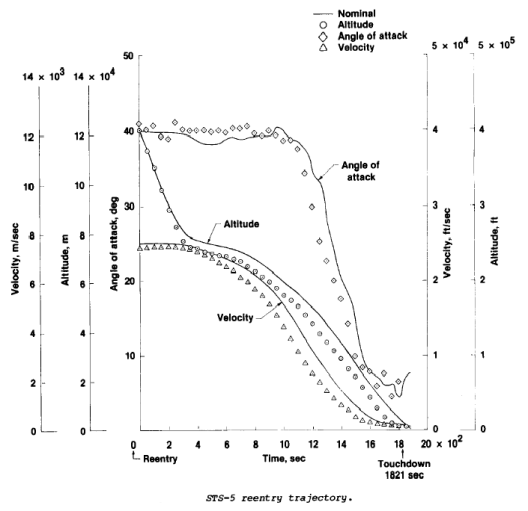 This intrigued me. Reading on about the X-33 Venturestar program, this
vehicle would have had a surface/wing loading of 29 lb/ft^2. Given that the STS
Orbiter's wing loading is 96 lb/ft^2, it is obvious why the X-33 could reenter
with conventional titanium/inconel metal and titanium aliminide metal matrix
thermal protection panels and the Space Shuttle cannot: wing loading is the key
factor. The lower your wing loading, the less your vehicle heats up on reentry,
for the simple reason that a low wing loading allows your vehicle to slow down
faster at a higher altitude where the atmosphere is less dense. High wing
loadings force a vehicle to plow through to the denser air where hypersonic
thermal effects are greatest.
This intrigued me. Reading on about the X-33 Venturestar program, this
vehicle would have had a surface/wing loading of 29 lb/ft^2. Given that the STS
Orbiter's wing loading is 96 lb/ft^2, it is obvious why the X-33 could reenter
with conventional titanium/inconel metal and titanium aliminide metal matrix
thermal protection panels and the Space Shuttle cannot: wing loading is the key
factor. The lower your wing loading, the less your vehicle heats up on reentry,
for the simple reason that a low wing loading allows your vehicle to slow down
faster at a higher altitude where the atmosphere is less dense. High wing
loadings force a vehicle to plow through to the denser air where hypersonic
thermal effects are greatest.
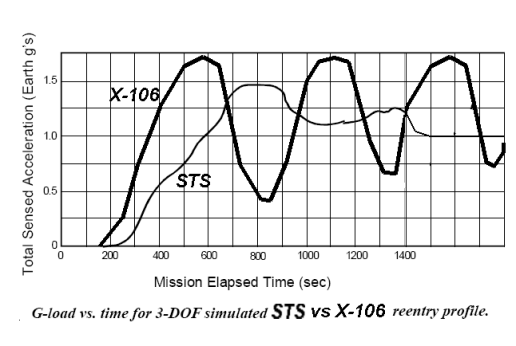
 As
detailed previously, getting the TPS right is essential to a vehicle that can
not only survive reentry, but do so on a regular repeated basis without
extensive TPS maintenance prior to each flight. The experience of the Space
Shuttle program once again demonstrates what not to do. This table of the TPS
related maintenance man hours required for each shuttle flight makes clear that
the TPS's fragility and complexity causes a doubling of the maintenance
man-hours per flight, on average. No one system should so dominate the
maintenance requirements of any aircraft or spacecraft.
As
detailed previously, getting the TPS right is essential to a vehicle that can
not only survive reentry, but do so on a regular repeated basis without
extensive TPS maintenance prior to each flight. The experience of the Space
Shuttle program once again demonstrates what not to do. This table of the TPS
related maintenance man hours required for each shuttle flight makes clear that
the TPS's fragility and complexity causes a doubling of the maintenance
man-hours per flight, on average. No one system should so dominate the
maintenance requirements of any aircraft or spacecraft.
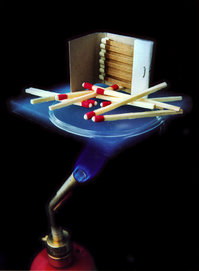 Avoiding the need for extreme temperature TPS to begin with would be a
help, and I believe we accomplish this in the X-106 with the low re-entry wing loading of
14.75 lb/ft^2, which is comparable to a Cessna 172, half that of the X-33, and
less than one sixth that of the Shuttle Orbiter. Reentering via a shallow glide
path utilizing skip-diving techniques should help minimize reentry heating
significantly. Use of reinforced carbon-carbon structures, while likely not
needed for its extreme temperature durability, will be needed for its ability to
radiate heat back to space quickly, its structural strength (allowing it to
assume structural duties), and its low maintenance requirements. It will allow
hypersonic flight in dense atmosphere on emergency bases. Alternatively,
modern metal matrix materials like titanium aluminide may be used in lower temp
areas, while RCC would only be absolutely necessary for leading edge surfaces.
Avoiding the need for extreme temperature TPS to begin with would be a
help, and I believe we accomplish this in the X-106 with the low re-entry wing loading of
14.75 lb/ft^2, which is comparable to a Cessna 172, half that of the X-33, and
less than one sixth that of the Shuttle Orbiter. Reentering via a shallow glide
path utilizing skip-diving techniques should help minimize reentry heating
significantly. Use of reinforced carbon-carbon structures, while likely not
needed for its extreme temperature durability, will be needed for its ability to
radiate heat back to space quickly, its structural strength (allowing it to
assume structural duties), and its low maintenance requirements. It will allow
hypersonic flight in dense atmosphere on emergency bases. Alternatively,
modern metal matrix materials like titanium aluminide may be used in lower temp
areas, while RCC would only be absolutely necessary for leading edge surfaces.
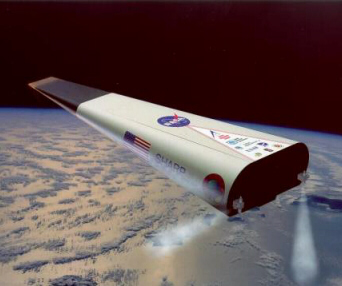 Another issue of our design is that it is a very 'sharp'
design, due to its past life as a supersonic interceptor. It has thin wings with
sharp leading edges and a pointed nose cone. A new Ultra High Temperature TPS
material was to be flight tested by NASA's
Another issue of our design is that it is a very 'sharp'
design, due to its past life as a supersonic interceptor. It has thin wings with
sharp leading edges and a pointed nose cone. A new Ultra High Temperature TPS
material was to be flight tested by NASA's